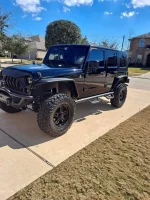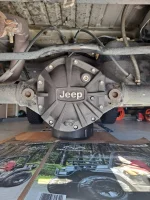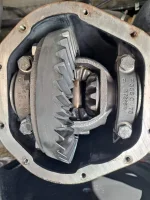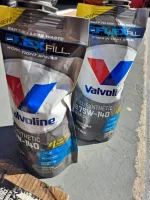Ok, gotcha. So consider this….
Varnish is caused by insolubles/soot which eventually leads to sludge when left unchecked. Are you implying that “longer” (OEM recommended) OCIs increase insoluble levels to that extent where varnish would be built up that severely?
Also, if we remove the valve cover and see areas with some varnish buildup, these are likely hot spots or areas where there isn’t much oil flow. The areas below with more oil flow are likely much “cleaner”
If performance (power and mpg) were to be affected, the rings would need be coked up. Varnish on the rings does not affect compression levels, but coking does. Still confused on how varnish affects mpg and power output as you claim
Lastly, there was an excerpt from an SAE article released that showed tribochemical film buildup aka varnish is what actually helped reduce wear numbers. So in reality, these short OCIs might keep the metal parts looking “nice” but increasing the wear numbers. Ive seen it several times where on UOAs average wear numbers actually continue to decrease as miles increase.
Varnish is not caused by soot.
Varnish is the result of the oil being unable to keep contaminants in suspension, the constituents of which are not only combustion byproducts, but also the result of the various components of the oil itself breaking down due to oxidation, shear...etc. Dispersants and detergents are meant to keep these products in suspension; keep them from plating out, but when the oil gets saturated enough with them, they start to lay down on surfaces with lower oil flow and higher heat.
Sludge is the result of a similar process, but has a moisture and carbon (soot) component to it and tends to build-up in areas of low flow and low heat.
I said nothing about OEM intervals. Typically, these are spec'd based on performance testing by the OEM as to their suitability, and deposit build-up is one of the parameters monitored. That's why OEM's in Europe that have Long Life approvals have extensive test protocols with limits on things like deposit formation, oxidation...etc. I'd check out the Afton specification handbook to get an idea of what this looks like.
Rings do not need to be coked-up to stick, heavy varnish causes ring sticking, particularly with modern low-tension rings. And when I say "modern" that's going back several decades. When we tore down my buddy's 302HO that had been run on conventional most of its life, the engine had a fair bit of varnish and the oil control rings were almost all stuck due to heavy varnish in the ring lands and the compression rings were also sticky, unable to move freely in their grooves. Both Toyota and GM have produced engines with insufficient drainback in the oil control ring area where heavy varnish build-up will lead to sticking and significant oil consumption. Once oil control is compromised, you have migration into not only the compression ring area but also the combustion chamber, both of which have a negative impact on efficiency and performance.
A tribochemical build-up (like what is laid down by ZDDP, moly....etc) is not the same as varnish, which is a sticky substance comprised of the materials I mentioned earlier, see this diagram as to how it is formed. Note the use of the term resin here:
UOA's don't directly measure wear and are widely misused by the general public, particularly enthusiasts. They are a tool able to measure a narrow band of metallic particles and their primary purpose is to determine the lube's suitability for continued use by way of condition as well as contaminant concentration levels, along with identification of unexpected contaminants, like silicon (dirt), coolant...etc. Doug Hillary's article on their use, featured on the main page of this site, should be mandatory reading.
Keep in mind that if you have an oil that has begun to reach its saturation point and no longer able to keep newly generated contaminants in suspension, particularly those of the heavier metallic variety, and they start plating out, that will affect what you "see" with a UOA. That does not mean that the wear rate has changed. It's also important to remember that many of the additives are "used up" in service, like ZDDP and FM's like moly that plate-out on surfaces to protect them. This is one of the reasons we watch TBN/TAN, as one can get an idea as to the condition of the DI package; to infer its depletion level.
Fresh oil on the other hand, with a fresh DI package, will liberate layed-down material from the previous fill if it was run too long, which will cause a post-OCI rate change in terms of contaminant uptake, that will level-off after this process tapers off. There's also the post-OCI reestablishment of tribofilms with fresh additive displacing old, particularly if there is a change in oil chemistry, which can again affect what we "see" in a UOA. Esters are particularly "bad" for chelating metallic particles as they compete for surface space and can artificially increase the levels of certain metals picked-up via spectrography, while not actually increasing wear.
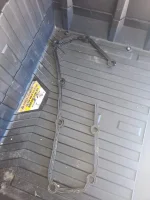 FB_IMG_1644453700146.webp88.4 KB · Views: 511
FB_IMG_1644453700146.webp88.4 KB · Views: 511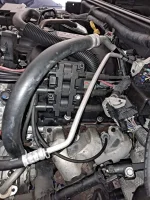 FB_IMG_1644453697171.webp143.7 KB · Views: 392
FB_IMG_1644453697171.webp143.7 KB · Views: 392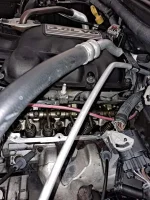 FB_IMG_1644453693892.webp138.5 KB · Views: 390
FB_IMG_1644453693892.webp138.5 KB · Views: 390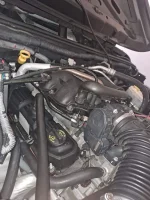 FB_IMG_1644453683272.webp107.1 KB · Views: 390
FB_IMG_1644453683272.webp107.1 KB · Views: 390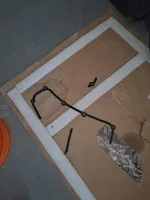 FB_IMG_1644453674340.webp54.1 KB · Views: 390
FB_IMG_1644453674340.webp54.1 KB · Views: 390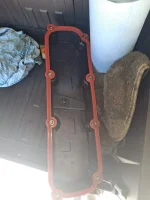 FB_IMG_1644453671681.webp62.8 KB · Views: 494
FB_IMG_1644453671681.webp62.8 KB · Views: 494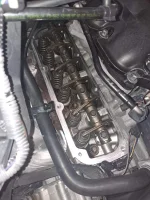 FB_IMG_1644453668622.webp118.3 KB · Views: 572
FB_IMG_1644453668622.webp118.3 KB · Views: 572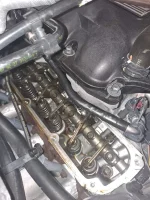 FB_IMG_1644453665692.webp118.9 KB · Views: 571
FB_IMG_1644453665692.webp118.9 KB · Views: 571
